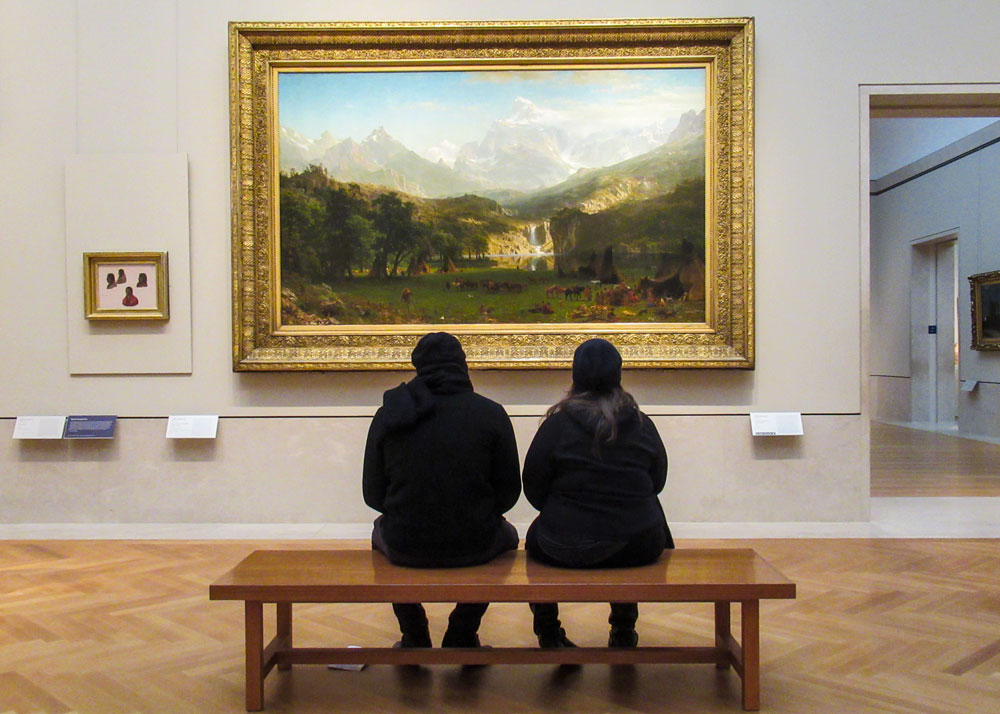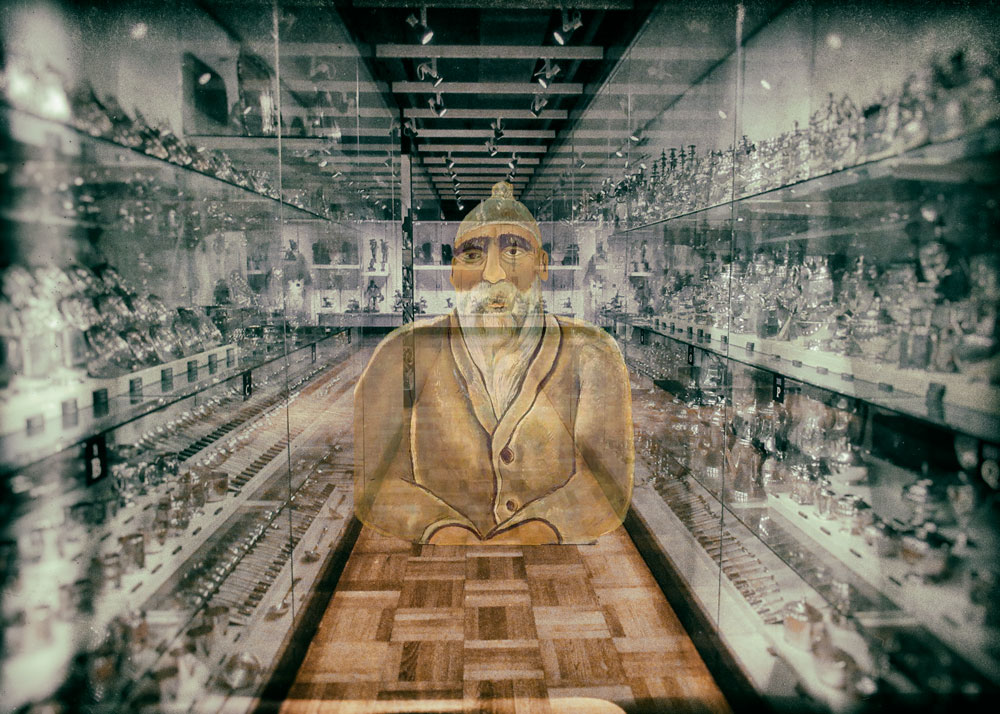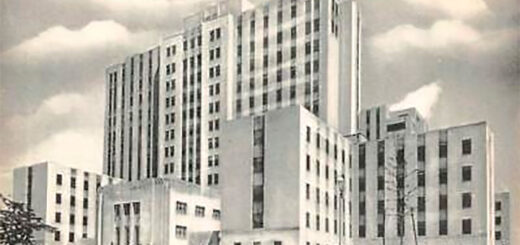Visible Storage: A Ghost Story
 One time I took a hike through the Metropolitan Museum in New York City. It’s a big place. At the trailhead is a ranger station where they charge admission. I got past that and soon enough was in the American Wing, strolling along a well-blazed trail through exhibitions of notable landscape paintings. Ample interpretive signage ensured nobody would get lost in this aesthetic wilderness. Museum officials call it “a well-curated experience.” The trail was crowded with well-dressed thru-hikers, each tethered by the ears to an iPad tour guide. Everybody was getting the same story. Hoping for something different, I wandered into the backcountry of the museum.
One time I took a hike through the Metropolitan Museum in New York City. It’s a big place. At the trailhead is a ranger station where they charge admission. I got past that and soon enough was in the American Wing, strolling along a well-blazed trail through exhibitions of notable landscape paintings. Ample interpretive signage ensured nobody would get lost in this aesthetic wilderness. Museum officials call it “a well-curated experience.” The trail was crowded with well-dressed thru-hikers, each tethered by the ears to an iPad tour guide. Everybody was getting the same story. Hoping for something different, I wandered into the backcountry of the museum.
In a dusky, unfrequented hallway, I encountered the raving ghost of Jackson Pollock, his eyeballs transparent and dripping with painterly tears. Within those eyes I caught a glimpse of the artist Thomas Hart Benton sitting in a lawn chair, drinking a can of beer. When he spotted me, he called out from the depths of the ghost’s eyes: “Hey! You want something different? Get off the beaten path!” He pointed to my right. I saw a dark hallway. I looked back into the ghost’s eyes. Thomas Hart Benton smiled knowingly and raised his beer. I replied with a shrug that said “Why not?”
I headed down the dark hallway and came to a cavernous region of un-curated doodads. Corridor after corridor of climate-controlled glass cases crammed with teapots, toasters, and Tiffany lamps, bronze statues of stalking panthers, glittering porcelain vases, goblets, flasks, and porringers, buckles, tankards, and clocks—it was a veritable old-time Hackensack meadows of American material culture, a bloated columbarium of consumer desire, a charnel house of highbrow meaning. None of it made any sense. It was like stumbling into the scariest episode ever of the TV show “Hoarders”.
In a far-off corner I came upon hundreds of 19th century American paintings, each consigned to a translucent, climate-controlled coffin. Near the end of one especially dim aisle, I discerned an ashen figure, beckoning. It appeared to be an older man, long-bearded, robust of build, wearing a heavy winter overcoat and a reddish-brown fisherman’s cap. His eyebrows hung like hoary lichens from a granite ledge. He looked as if he had just stepped out of a portrait by Marsden Hartley. Indeed he had!
This was Hartley’s portrait of his friend and fellow artist Albert Pinkham Ryder. It had become unfixed from its moorings and stood teetering in front of its now-blank canvas still in the gilded frame. I say teetering because this figure of Ryder only existed from the waist up. That’s how Hartley originally painted it—without a leg to stand on. Whenever the figure moved, it shed clouds of brittle paint flecks. They fell to the floor like dandruff rain.
Now this was something different! You don’t see displays like this out on the main exhibition floors of the Met. I owed Thomas Hart Benton a beer. But I wasn’t going anywhere just yet. The image of Ryder had something to say. It motioned for me to stoop down for a face-to-face chat. Sure, why not? I stooped down.
The image put on a sinister grin. Even that subtle movement caused a heavy shower of paint flecks. It made my nose itch. Then, in a breath reeking of linseed oil and anchovies, the image spoke: “I have a secret to share!” The words were punctuated with a giggle.
“Go ahead,” I said.
The grin grew wider and more sinister. The image said: “All the paintings in this museum attributed to me . . . are forgeries!” Another giggle. “Every single one of them!” Giggle again.
“You’re not exactly the real thing yourself,” I said.
The image of Ryder glowered but kept talking, shedding more clouds of paint flecks.
“Despite your insouciance, Sir, I shall tell you where a large cache of my genuine canvases is hidden.” No giggle this time. “Listen up. You must proceed immediately to Brooklyn and obtain those canvases and bring them back to me. Fail to do this and I will condemn you forever to this realm of Visible Storage! You won’t even be assigned an accession number!”
I suppressed a giggle of my own.
“Now then,” the image continued, “you must proceed at once to this address in Red Hook —”. The image extended a trembling hand in my direction. It may have been clutching a slip of paper, but so much paint had flecked off by this point the image had become diaphanous to the point of transparency.
Then it happened.
“ACHOO!”
Damn those paint flecks! My sneeze brought the interview to an abrupt halt. The force of it dissolved the image of Albert Pinkham Ryder, blowing what remained of it back onto the framed canvas where it belonged. The image was considerably faded now but at least it was silent once again.
At that point I had had enough of Visible Storage. I retraced my route back to the bright, curated spaces of the museum’s exhibition halls. No more ghosts for me, no more rogue images. I stepped out into the warm sunshine on Fifth Avenue, happy not be going to Brooklyn.
 ©John P. O’Grady
©John P. O’Grady
Originally appeared in The Mountain Eagle on January 8, 2021


